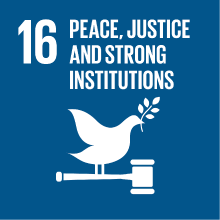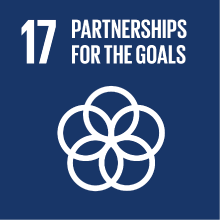THE CITY IN THE ISLAMIC WORLD
- Academic year
- 2021/2022 Syllabus of previous years
- Official course title
- LA CITTÀ NEL MONDO ISLAMICO
- Course code
- LM2210 (AF:353716 AR:187131)
- Teaching language
- Italian
- Modality
- On campus classes
- ECTS credits
- 6
- Degree level
- Master's Degree Programme (DM270)
- Academic Discipline
- L-OR/11
- Period
- 2nd Semester
- Where
- VENEZIA
- Moodle
- Go to Moodle page
Contribution of the course to the overall degree programme goals
Expected learning outcomes
Pre-requirements
Contents
The legacy of the tradition and the innovations (for example: the abandonment of the orthogonal model, the introduction of the citadel) will be discussed in the context of the new society shaped by major political, economic, social and cultural elements. An attempt will be made to identify a semiotics of urban and domestic space specific to Islamic societies. The case of four capitals will be addressed in detail: Cairo, Dubai, Istanbul, Cordoba.
The course will also critically address the concept of the 'Islamic city', from the nineteenth-century 'orientalist' vision to its contemporary formulations.
Referral texts
J. Abu-Lughod, The Islamic City: Historical Myth, Islamic Essence, and Contemporary Relevance,”International Journal of Middle East Studies, Vol. 19, No. 2, May, 1987, pp. 155-176 (pdf)
M. Apaydin, Islamic city: a rhetorical argument or a political tool?, Al-Machriq, 2015, V. 89/1, pp. 313-328 (pdf)
Gideon Avni, “From Polis to Madina” Revisited – Urban Change in Byzantine and early Islamic Palestine, JRAS, Series 3, 21, 3 (2011), pp. 301–329 (pdf).
Jere L. Bacharach,The court-citadel: an Islamic urban symbol of power, in Urbanism in Islam, III, Tokyo 1989, pp. 206-245 (pdf).
D. Behrens-Abouseif, S. Denoix, J.-Cl. Garcin, Le Caire, in Grandes villes méditerranéennes du monde musulman médiéval, Roma, 2000, pp. 177-203 (pdf).
Doris Behrens-Abouseif, The Mamluk City, in AAVV, The City in the Islamic World, Leiden and Boston, 2008, pp. 295-316 (pdf).
P. Cuneo, Storia dell’Urbanistica. Il mondo Islamico, Bari, 1986, pp. 368-378 (pdf).
D.Genequand, The New Urban Settlement at Qasr al-Hayr al-Sharqi: Components and Development in the Early Islamic Period, in by K. Bartl and A.R. Moaz (a cura di), Residences, Castles, Settlements. Transformation Processes Between Late Antiquity and Early Islam in Bilad al-Sham, Rahden (OrA 24), 2008 (pdf).
Haider, The growing pains of Dubai: a city in search of its identity, in AAVV, The city in the Islamic World, Leiden and Boston, 2008, pp. 1063-1084 (pdf)
H. Inalcik, Istanbul, EI2: solo gli argomenti trattati, e cioè paragrafi 2-5 (pdf)
H. Kennedy, From polis to madina: Urban change in late antique and early Islamic Syria, Past and Present 106, 1985, pp. 3-27 (pdf).
Keith Olroyd-Robinson, The urban architecture of al bastakiyyah, in Salma Samar Damluji (ed.), The architecture of the Arab United Emirates, Reading (UK), 2006, pp. 179-196 (pdf).
Z. Othman, R. Aird, L. Buys, Privacy, modesty, hospitality, and the design of Muslim homes: a literature review, Frontiers of Architectural Research 4, 2015, pp. 12–23 (pdf).
A.F. Sayyed e R.-P. Gayraud, Fustat-Le Caire à l’époque fatimide, in Grandes villes méditerranéennes du monde musulman médiéval, Roma, 2000, pp. 135-156 (pdf).
Serena Vicari, Che cosa è la città, Dispensa di Sociologia, Milano Bicocca (pdf).
Alan Walmsley, Urbanism at Islamic Jerash: new readings from archaeology and history, in Achim Lichtenberger, Rubina Raja (eds) The archaeology and history of Jerash, Turnhout (Brepols), 2018, pp. 241-256 (pdf).
S. Yerasimos, Istanbul, VIII. Monuments, EI2 supplementi (pdf).
Assessment methods
A. 35% of final mark
The student is required to submit an essay at least one week before the day of the oral examination, on a city of his/her choice with the previous agreement of the teacher. The student may also decide to give a presentation instead.
In this work the student will have to show that he/she has acquired the necessary critical skills and tools to face the study of a city in the Islamic world, and to define its characteristics in relation to the interpretative models that had been proposed.
B) 65% of final mark
At the oral examination the student will be required to illustrate the topics treated in the course of the lectures, with the help of images.
This part of the exam aims to verify that the student has acquired a basic knowledge of the history of the studies, of the development of the four capitals examined in detail and about the main problems related to them.
Type of exam
Teaching methods
Further information
2030 Agenda for Sustainable Development Goals
This subject deals with topics related to the macro-area "International cooperation" and contributes to the achievement of one or more goals of U. N. Agenda for Sustainable Development


